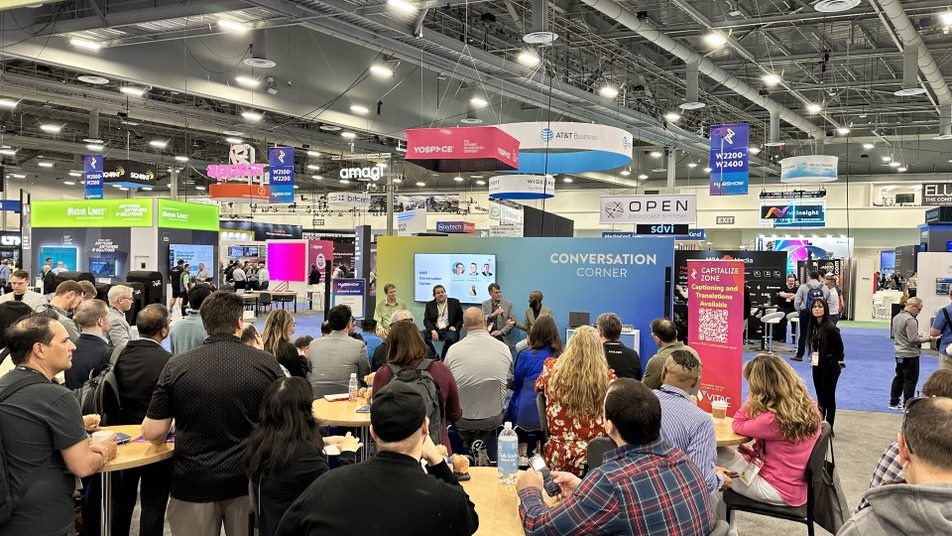A recent survey of individuals who are blind or with low vision found that the number one barrier to television and streaming programming was a lack of available audio description (AD), with more than half of respondents reporting that audio description was sometimes or always missing on shows they wanted to watch.
The Federal Communications Commission (FCC) is working to address this and other audio description concerns, and late last month OK’d recommendations on best practices associated with the transmission and receipt of AD content by program providers and distributors so that the files associated with full-length programming remain available regardless of where that program is broadcast.
The recommendations, developed by an FCC Disability Advisory Committee (DAC) working group, focused its considerations on concerns in the distribution of already-described programming and associated assets and addressed some of the current technical, human, and organizational challenges in providing consistent audio description to viewers.
Barriers in Audio Description
The American Foundation for the Blind’s “Barriers to Digital Inclusion Survey” collected data from nearly 400 participants who shared information about the daily tasks they performed using websites and mobile apps and how often they encountered barriers, including those encountered with video programming.
The survey found that 42% of respondents said a lack of audio description prevented them from using or enjoying videos, while 62% said that more audio described content would result in them using the media more often.
The report also showed that consumers face problems in identifying video programming containing audio description, leading to confusion and frustration when programming known to have audio description is not always available with audio description. For example, a show that’s broadcast on traditional TV with audio description might not always have that description available when it’s shown on a streaming service. And because some services don’t always identify described content, consumers often are left wondering which version of the program they’re watching.
Another barrier for consumers is poor quality sound in the audio description itself. Some described content doesn’t allow for adjustments in speech volume over background noise and music which can make it difficult for consumers to understand.
DAC Working Group Recommendations
Addressing the above concerns, the working group recommended a few items for the FCC to consider, including:
- Encouraging vendors to make “narration-only” audio description files available at all phases of the creation, distribution, and delivery process. Access to a narration-only audio description file – created before it is mixed into the main soundtrack – would enable video distributors to decide how to provide the best quality audio while also giving them flexibility on different platforms.
- Asking vendors to provide – and content creators to request – AD scripts with timestamps in addition to the description files. The addition of timecoded descriptions along with narration-only AD files would help the editing of audio description when programs have been recut for length, content, or advertising reasons.
- Facilitating a workshop between content creators, vendors, and distributors to discuss a system for cataloging the creation, ownership, and availability of AD assets across platforms, services, and distribution channels.
- Encouraging distributors and content owners to develop a process for consumers to raise questions and concerns over AD content and encourage the industry to investigate and resolve consumer issues.
Audio description has been an important topic at recent FCC meetings. The commission last year adopted rules to expand its audio description requirements to an additional 10 Designated Market Areas (DMAs) per year until all remaining DMAs are covered. Specifically, the commission decided to continue the phase-in with DMAs 101 through 110 on January 1, 2025, extending to 10 additional DMAs per year until the phase-in concludes with DMAs 201 through 210 on January 1, 2035.
A DMA is a region of the United States that is used to define television and radio markets. There are 210 DMAs in the U.S., which typically are based on metropolitan areas.
Next Up: AI Live Captioning
The FCC also heard a short update from a DAC working group tasked with outlining best practices on the use of artificial intelligence (AI) to caption live video programming. VITAC, which has been a member of or participated in four of the past five FCC Disability Advisory Committees, is a member of the AI working group.
The group is working on recommendations and best practices on the use of automatic speech recognition and other AI-based technologies as they apply to live or near-live video programming and how to leverage AI’s capabilities to improve the availability of captions. It expects to have draft recommendations at a future FCC-DAC meeting.
The full FCC Disability Advisory Committee meeting can be viewed here:




